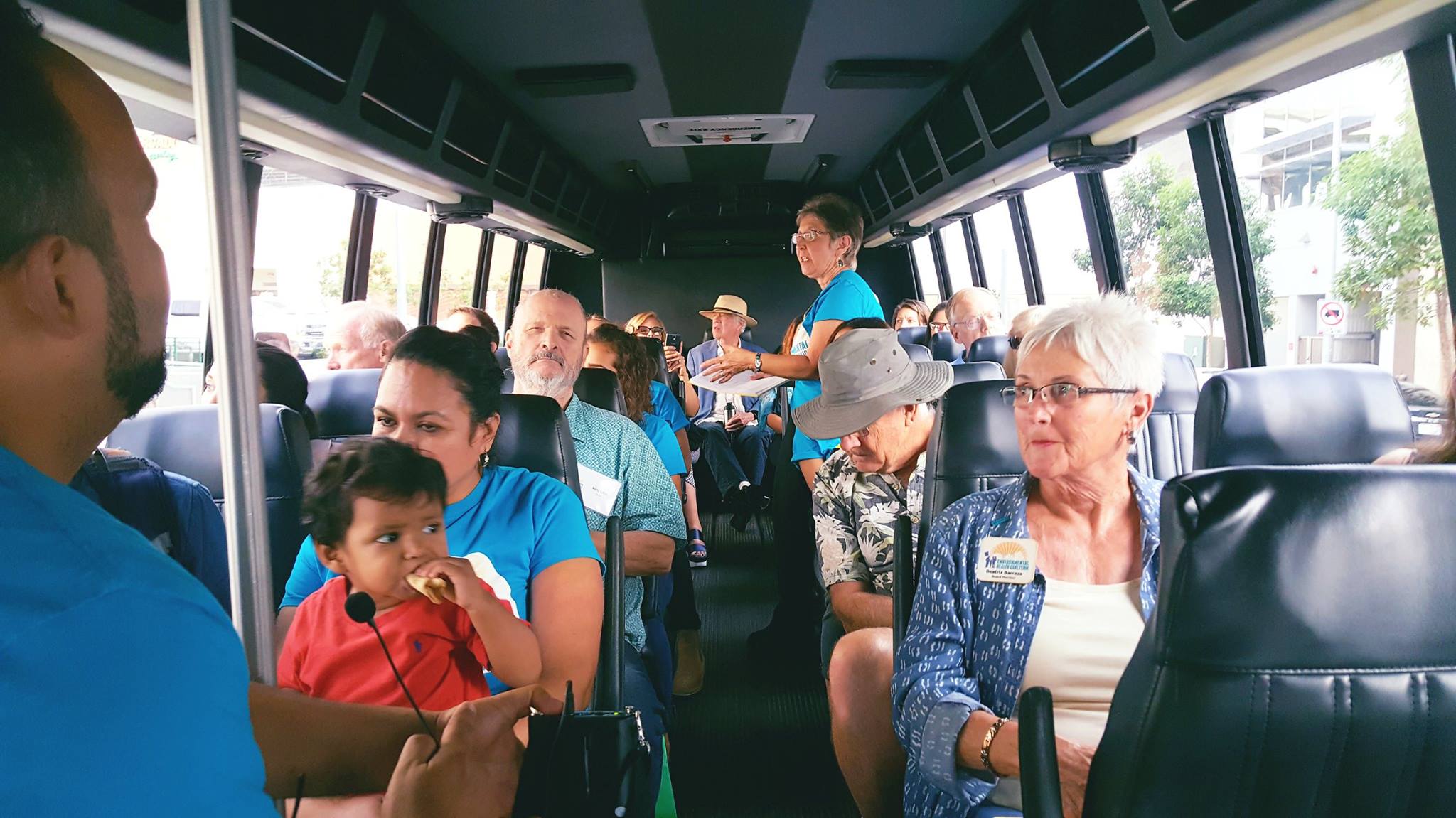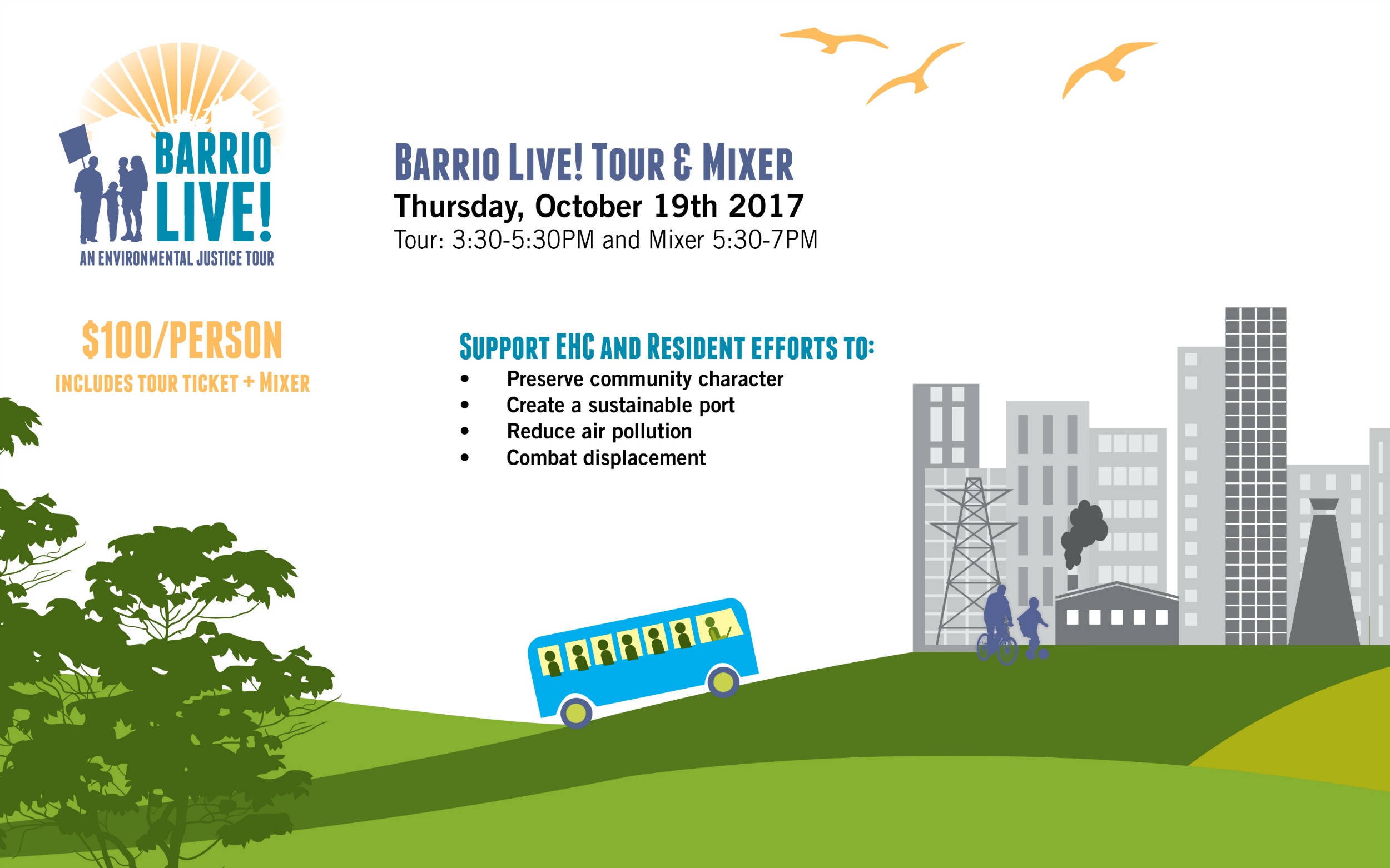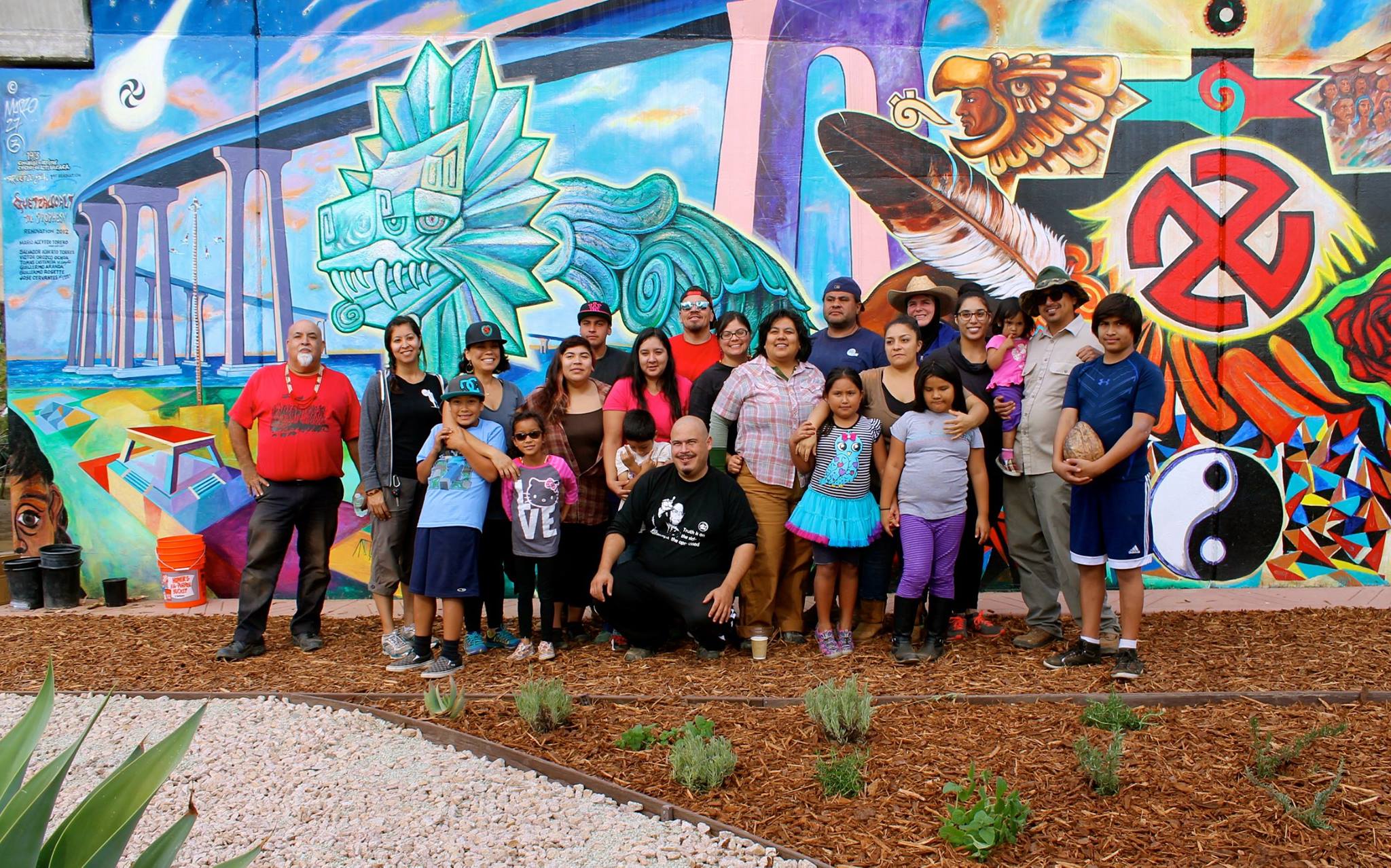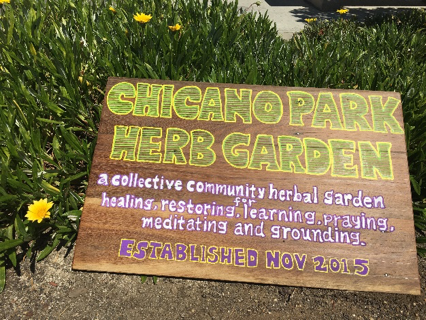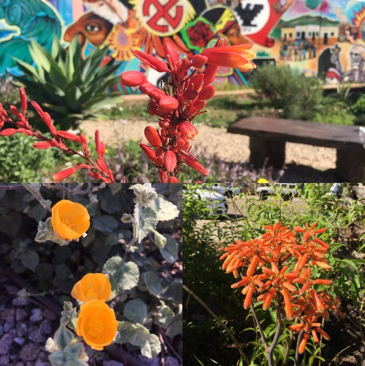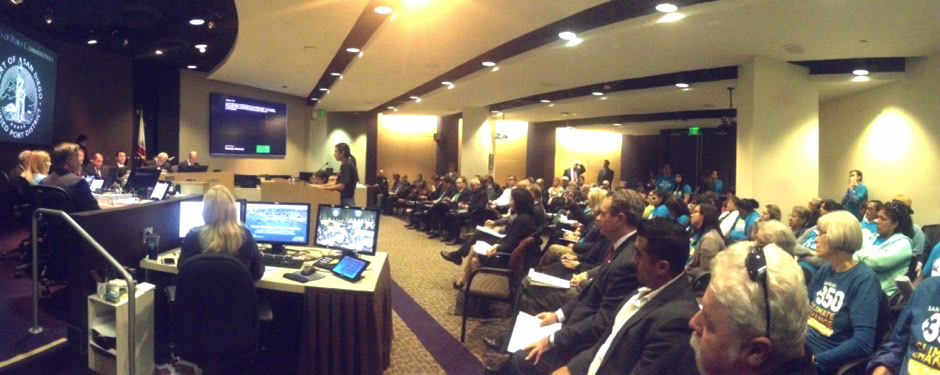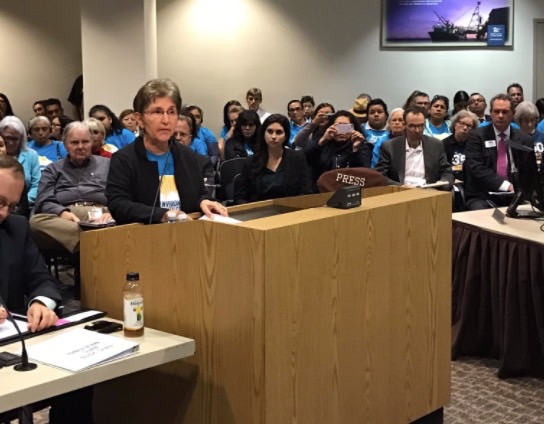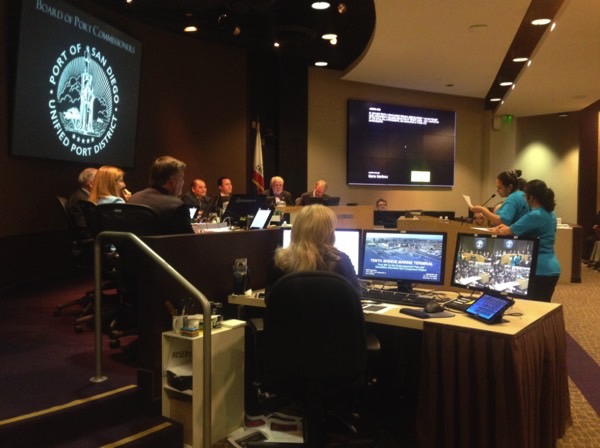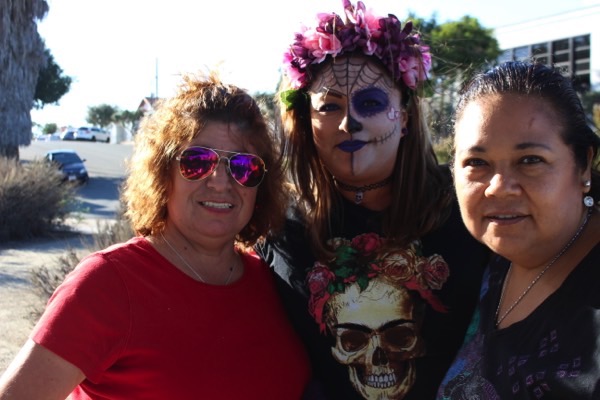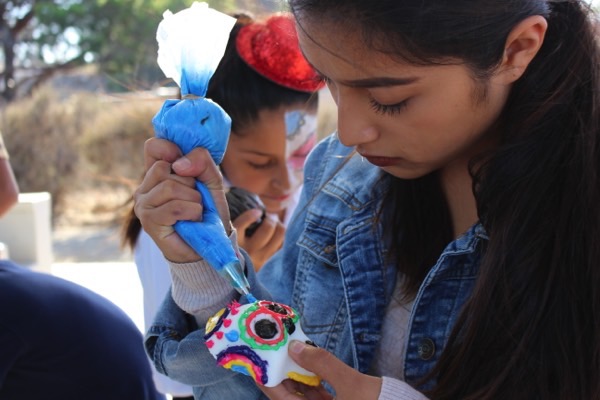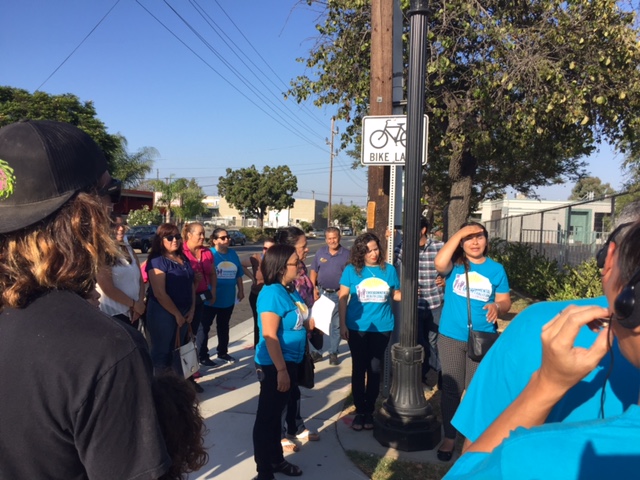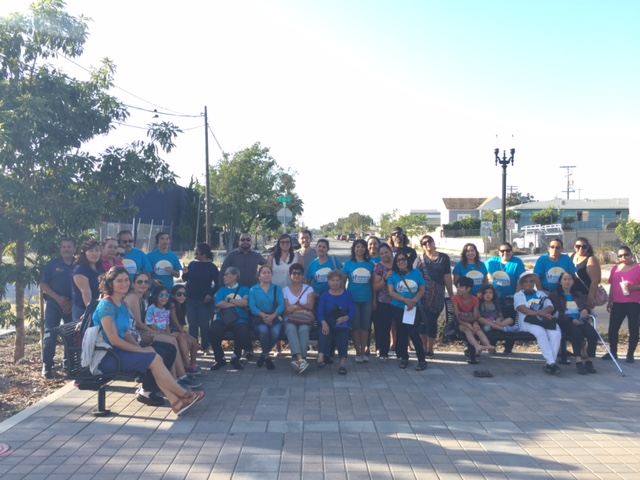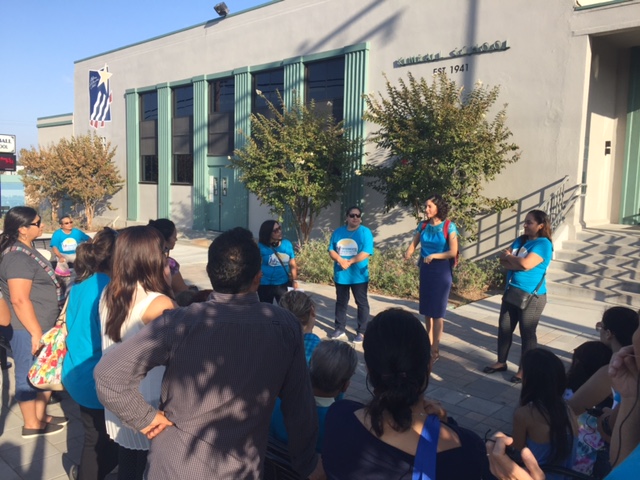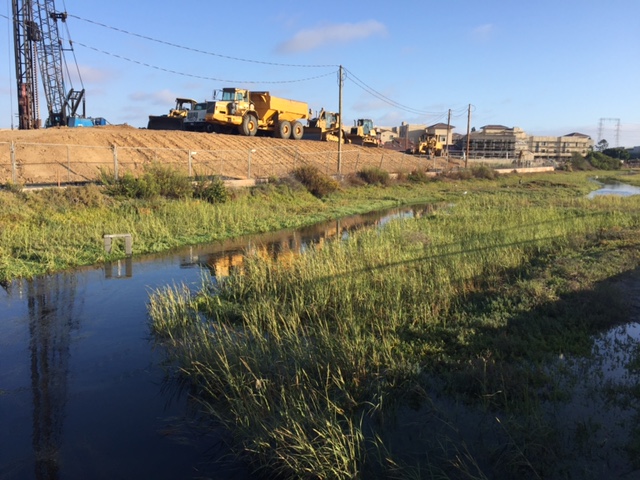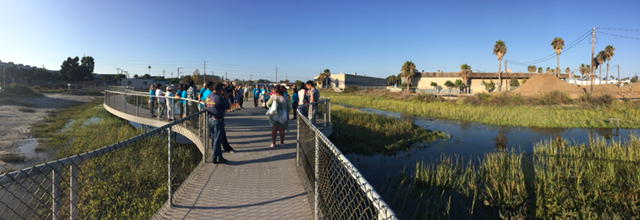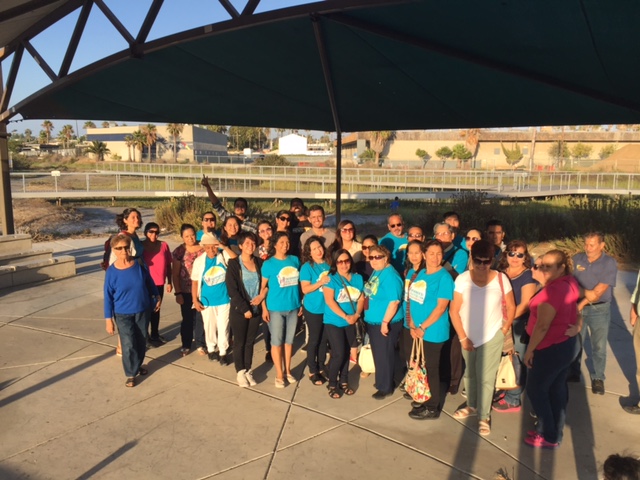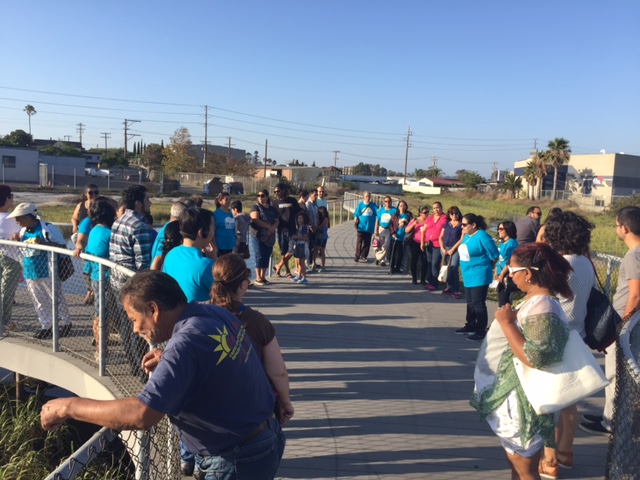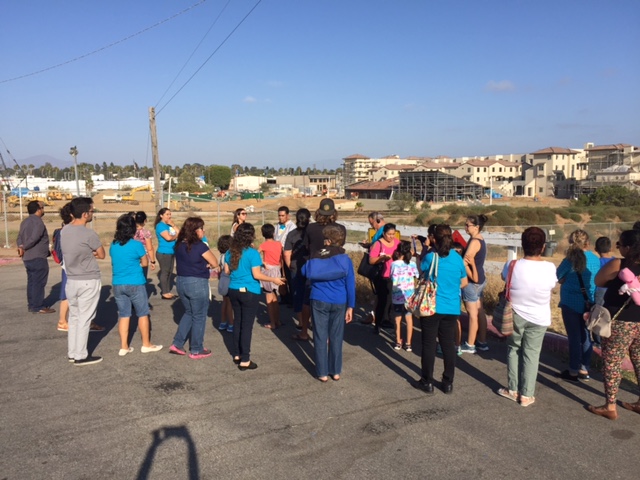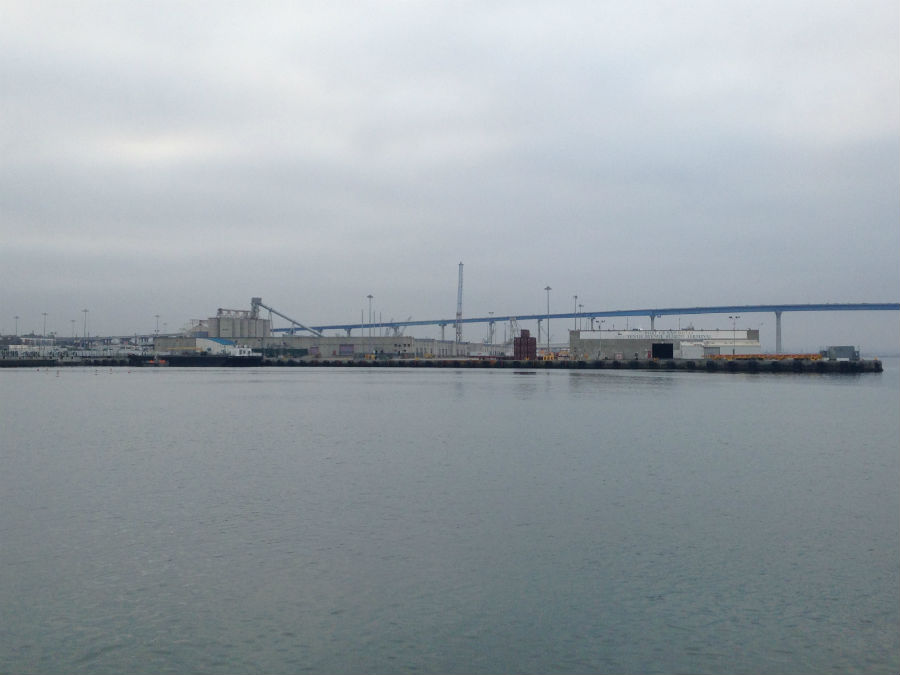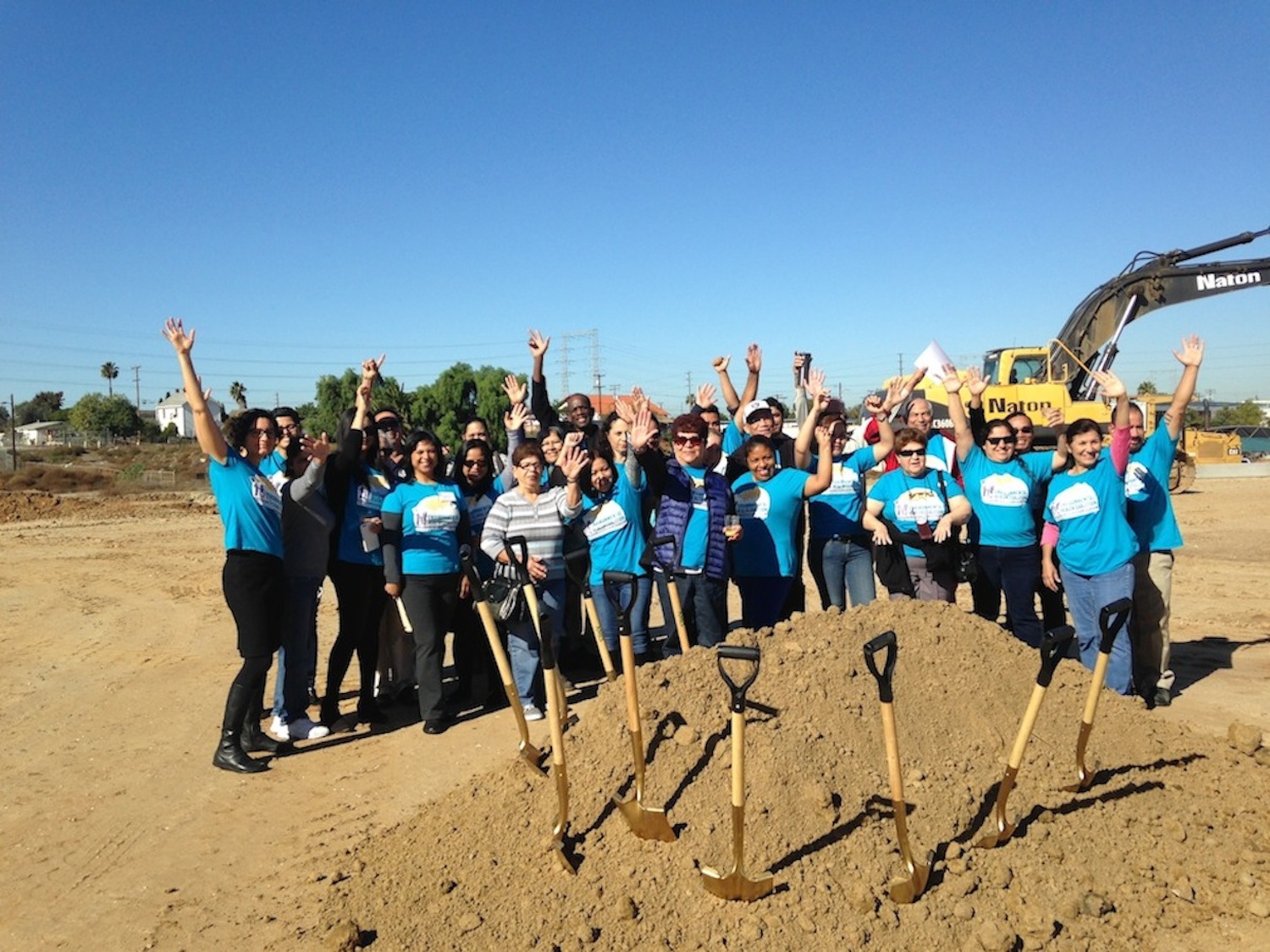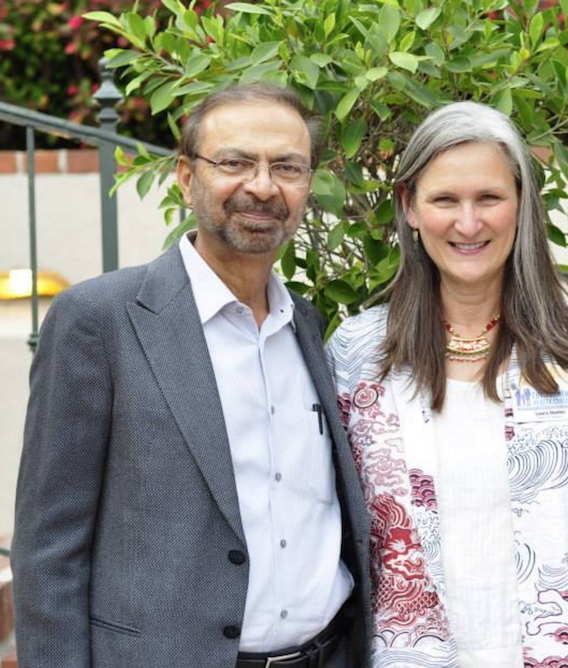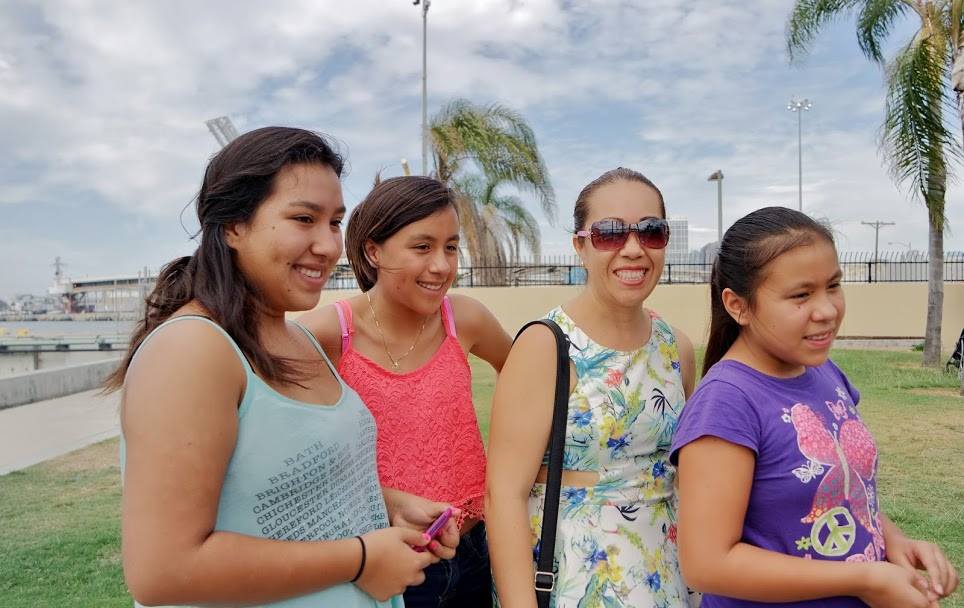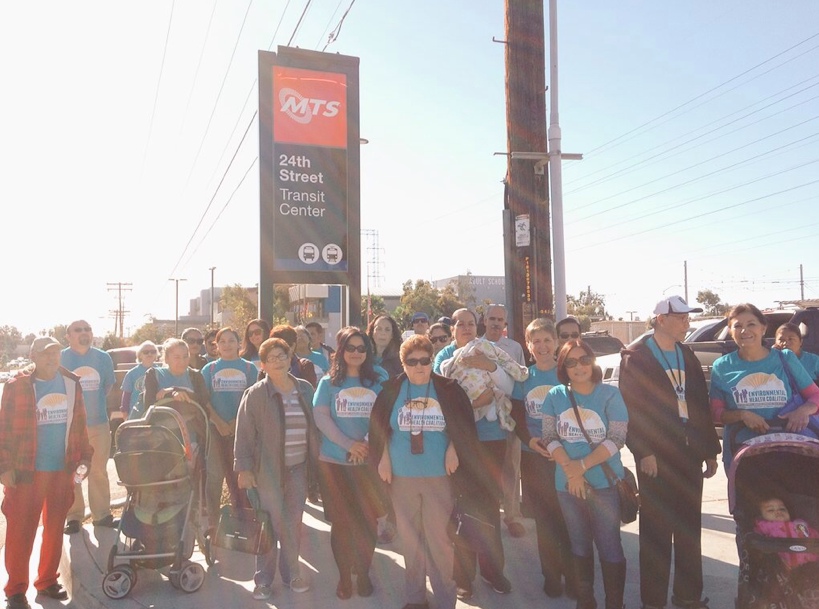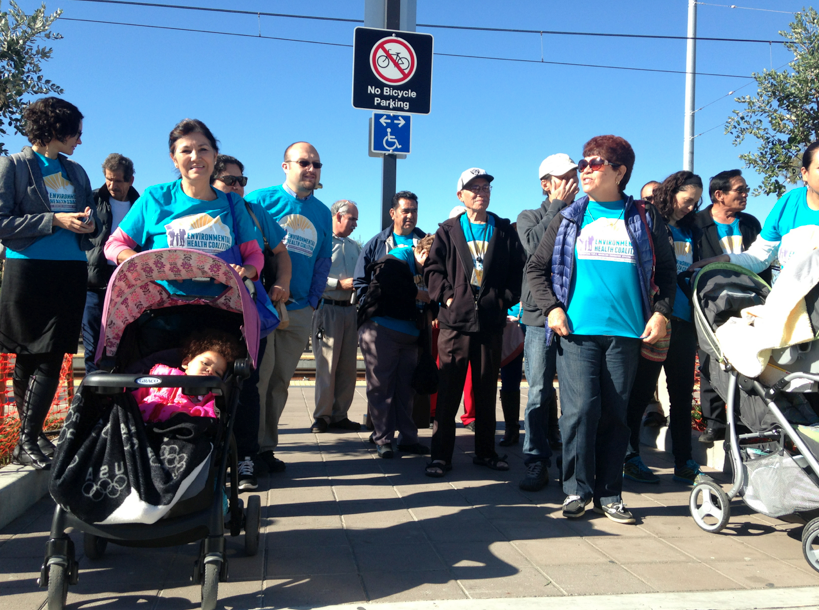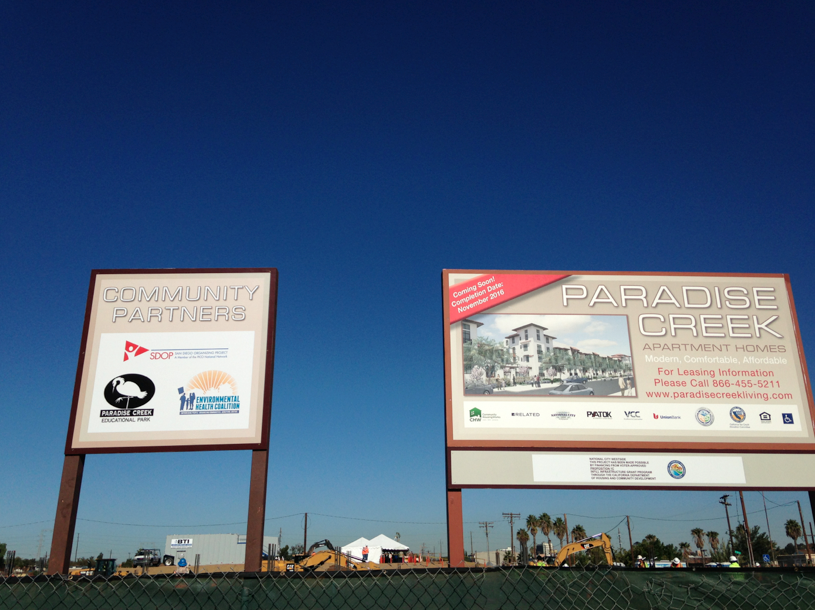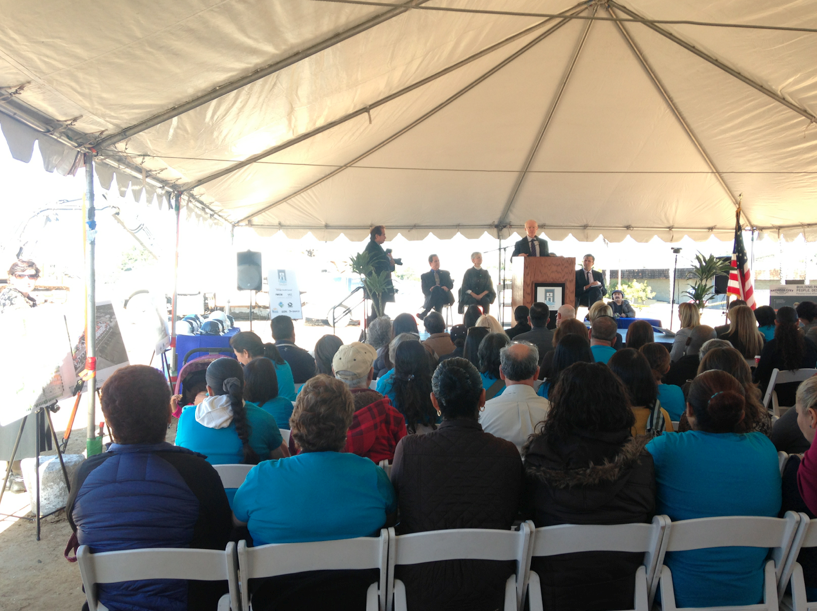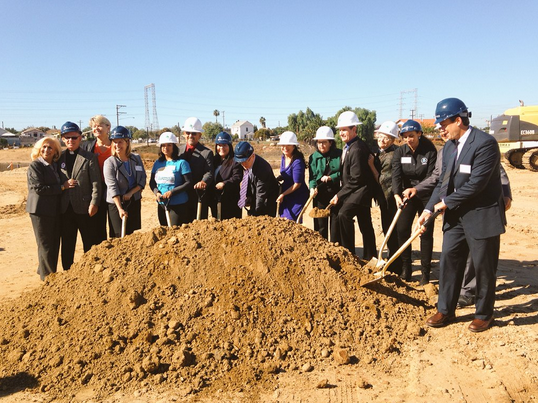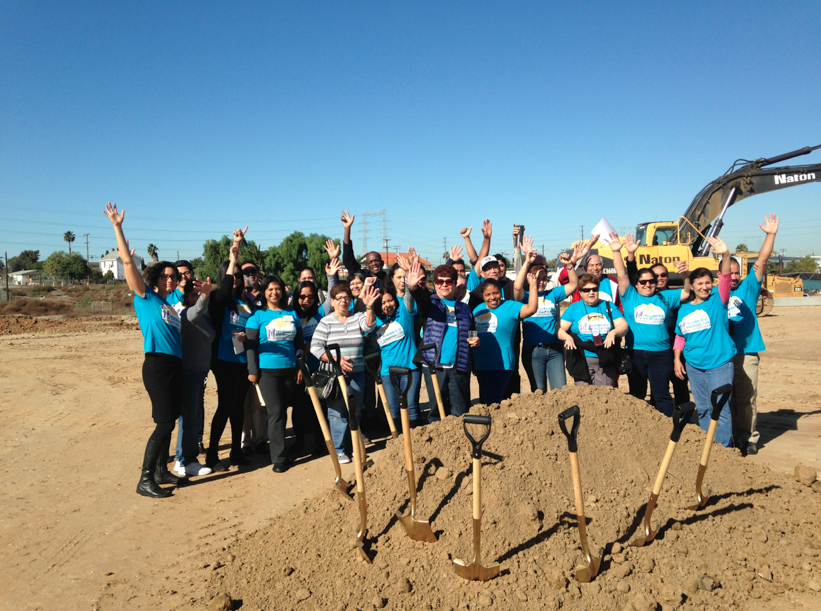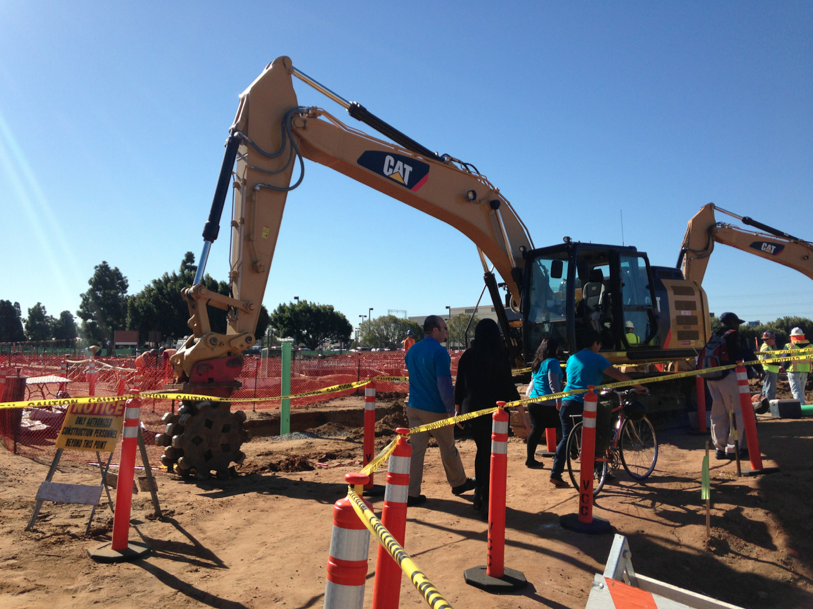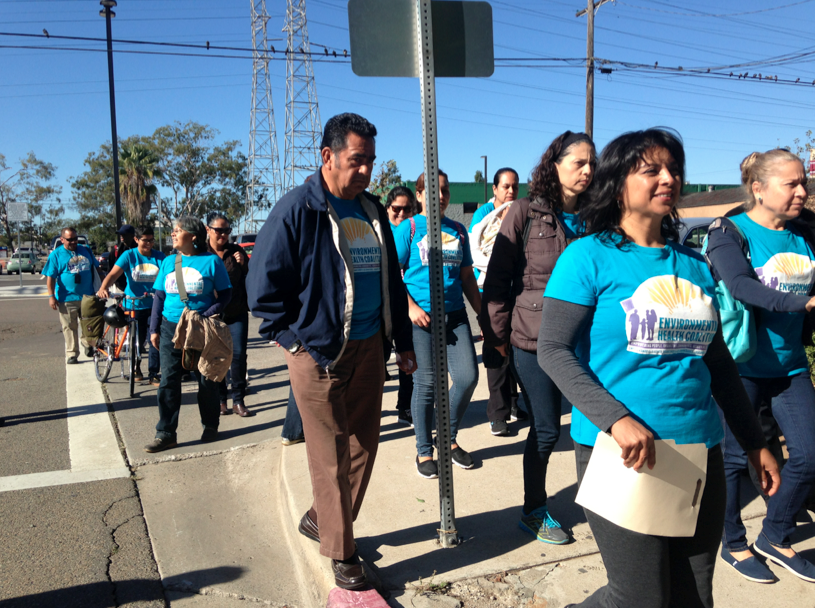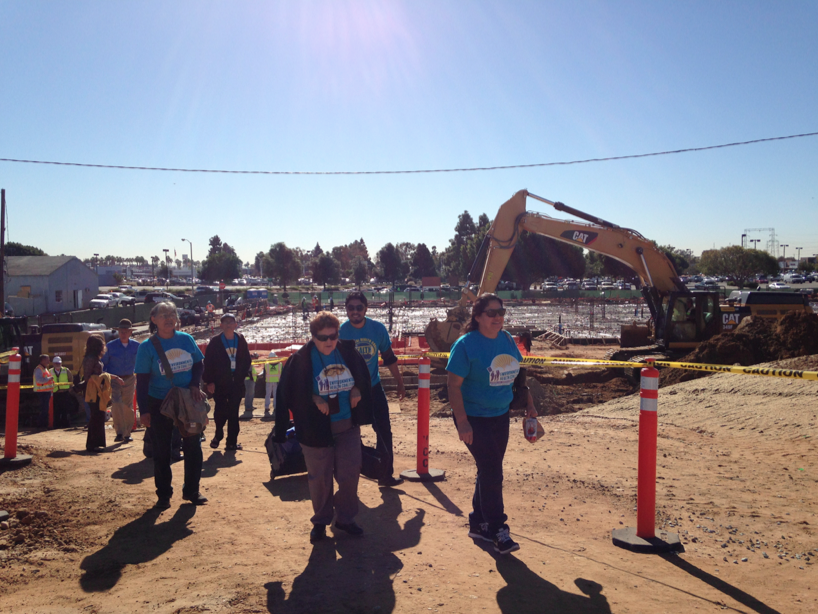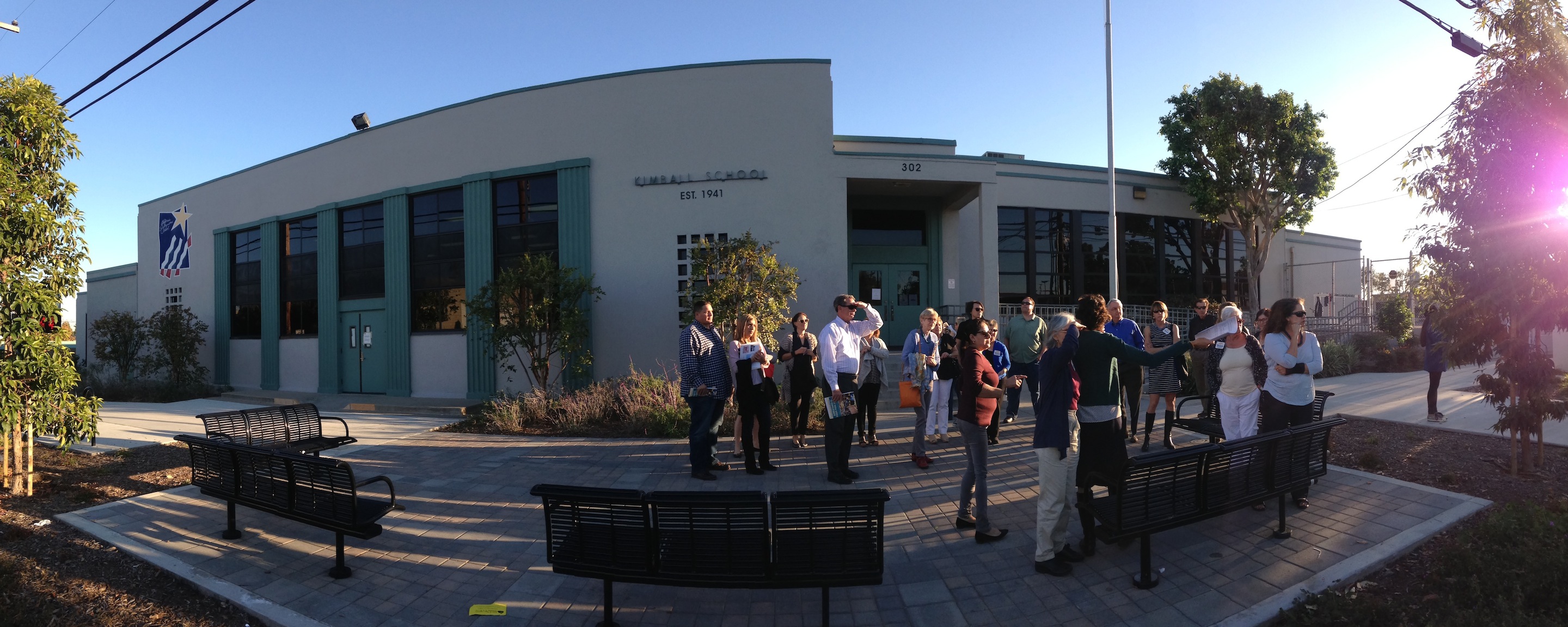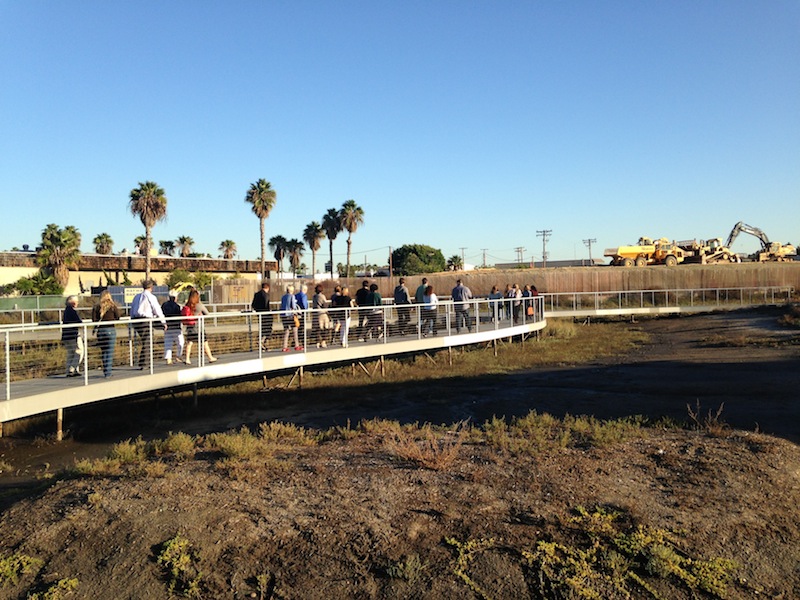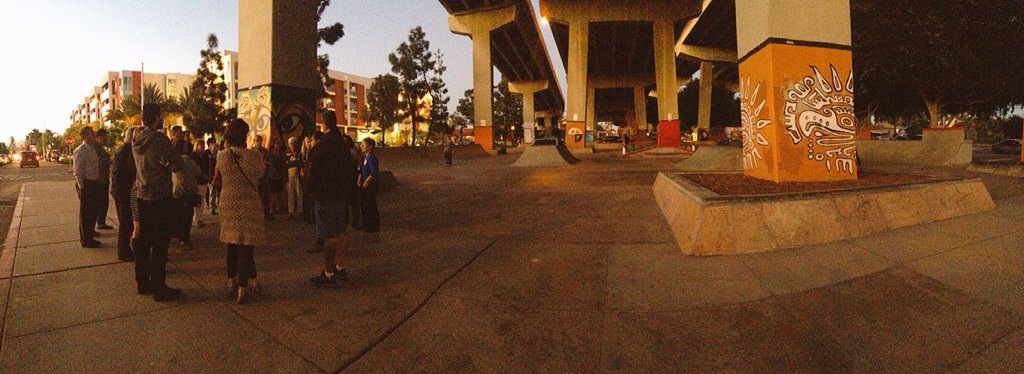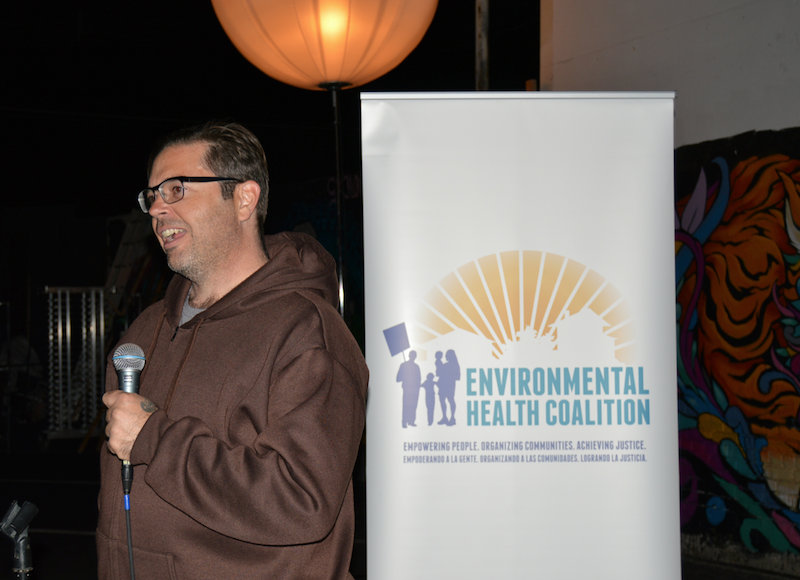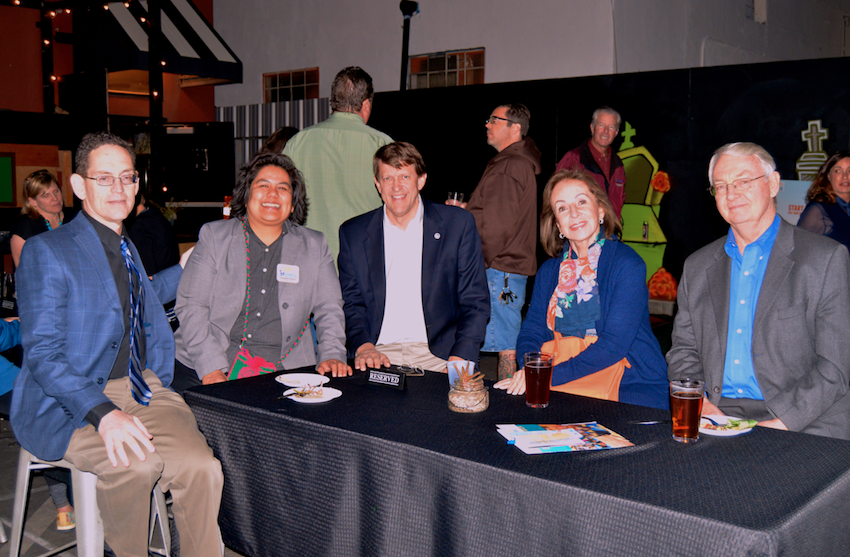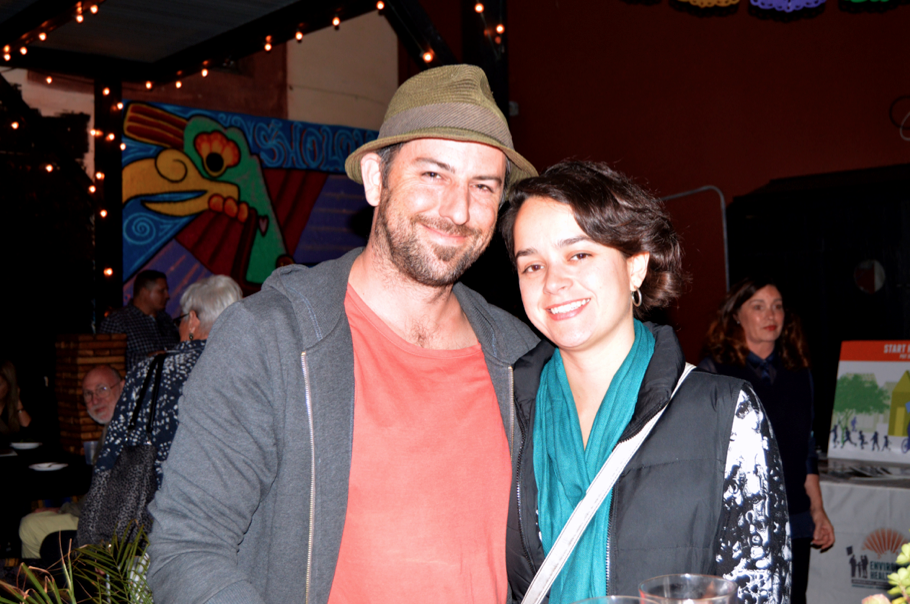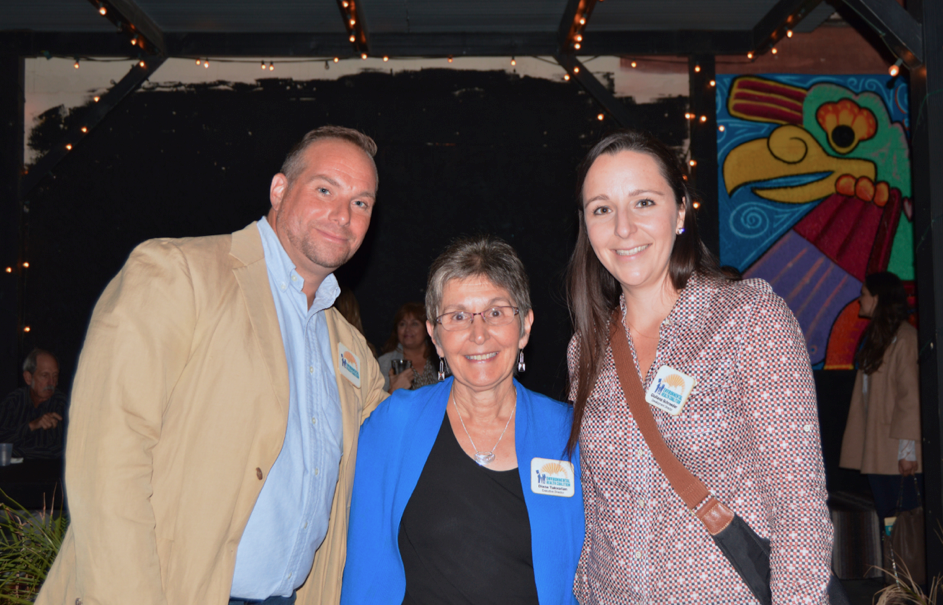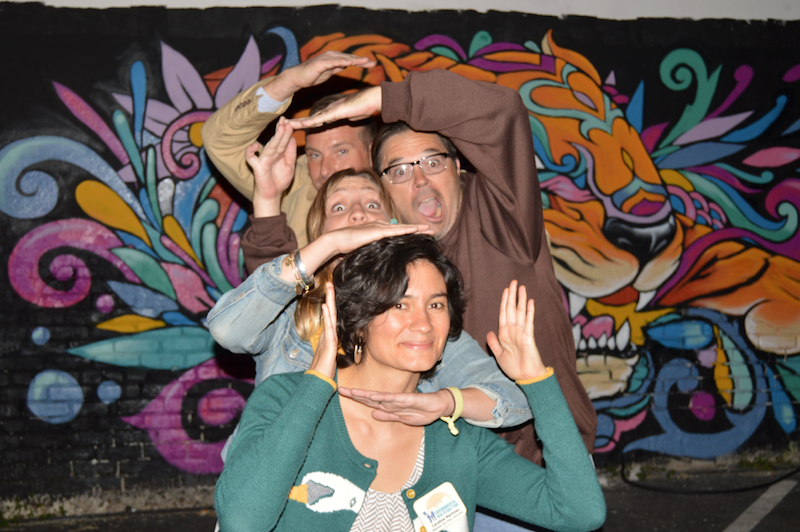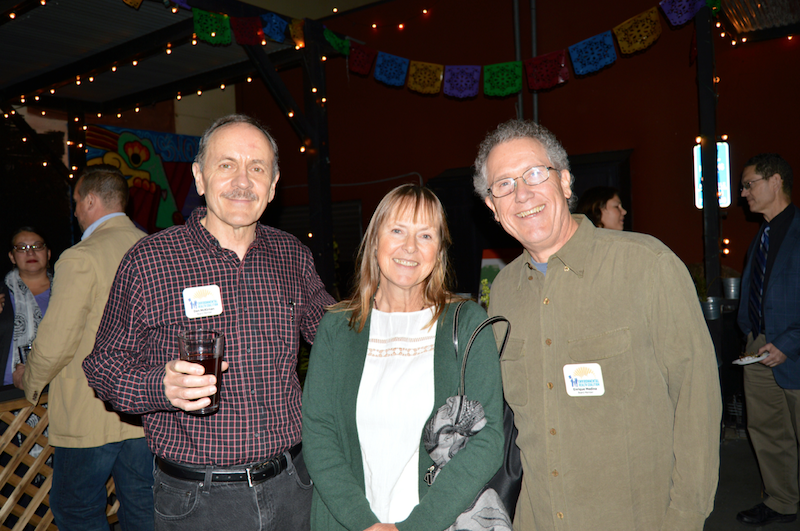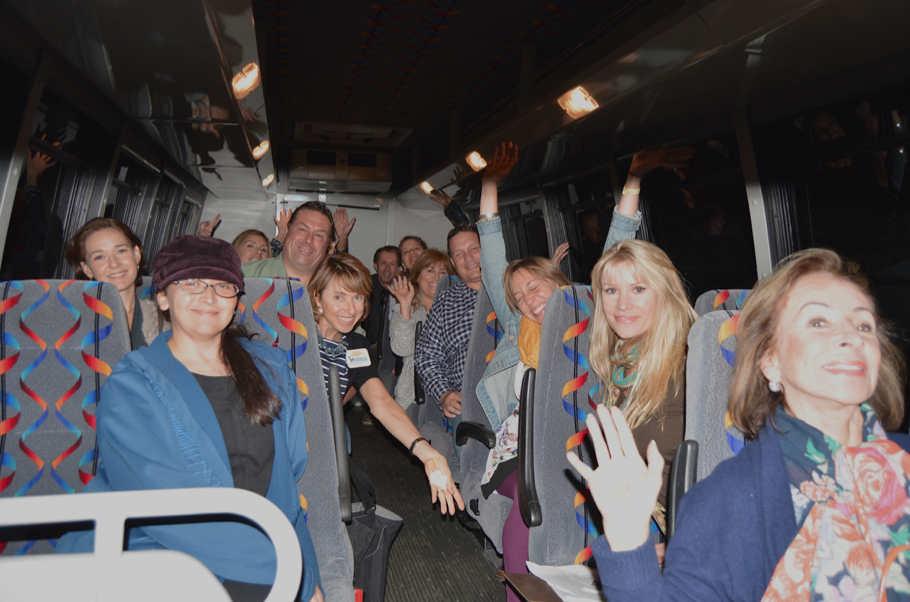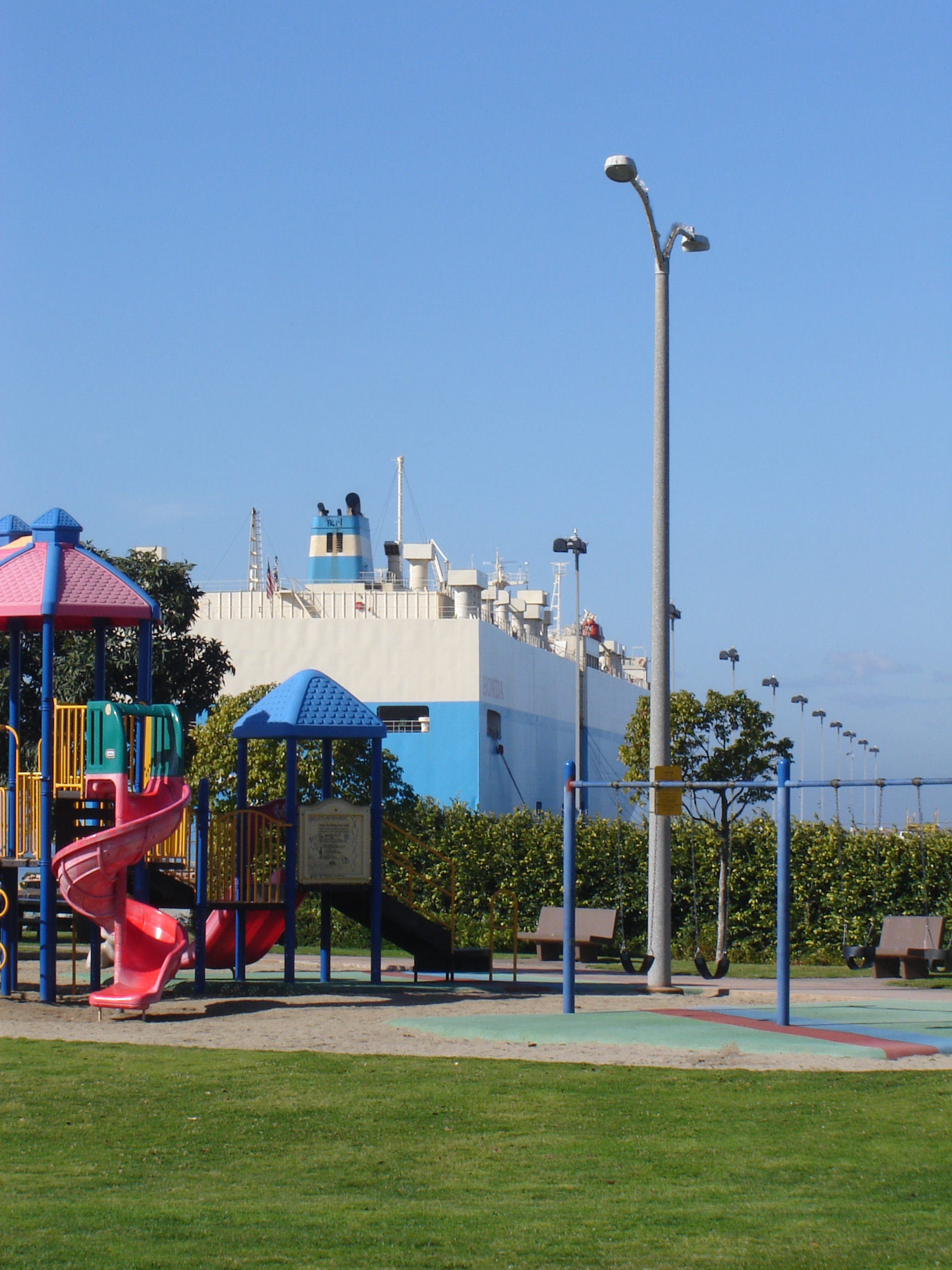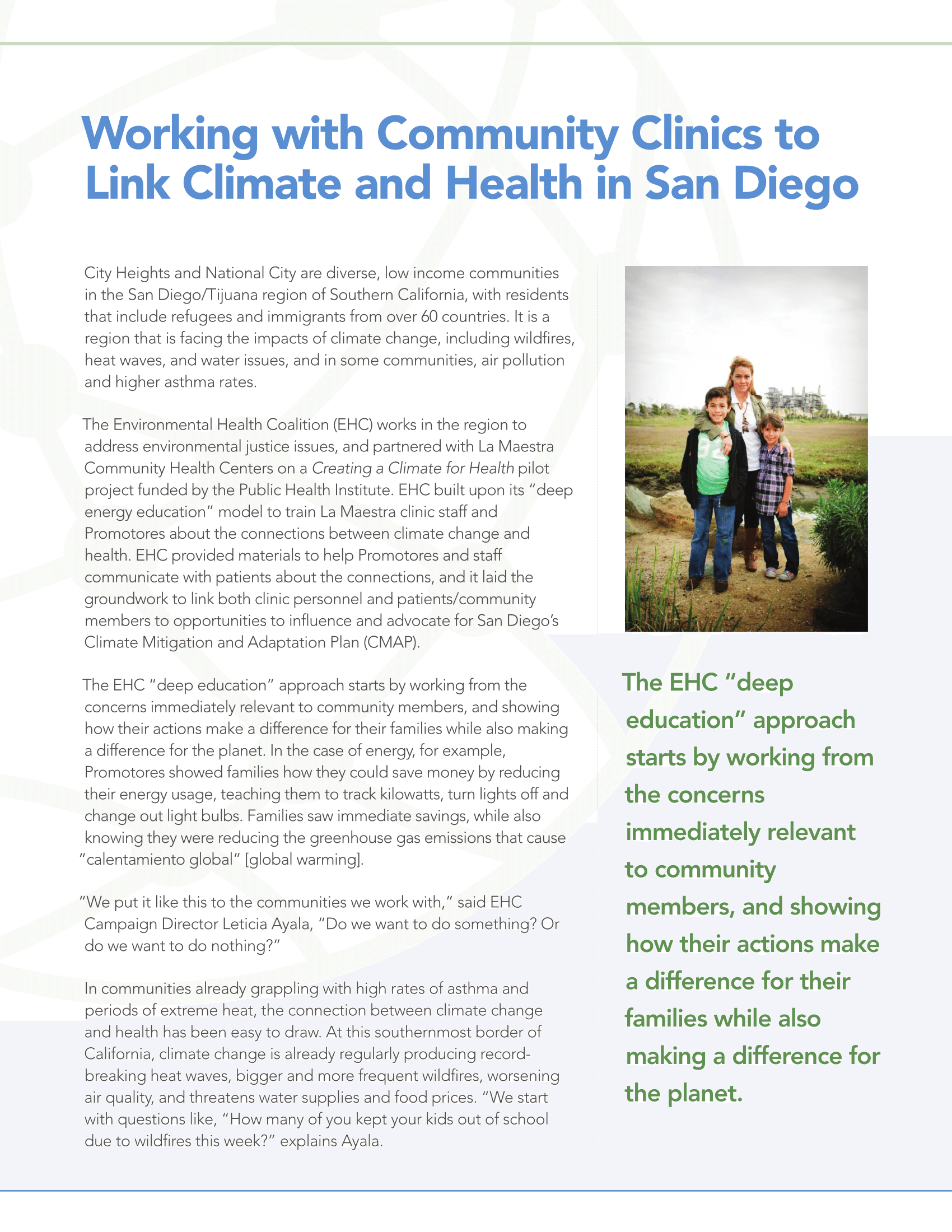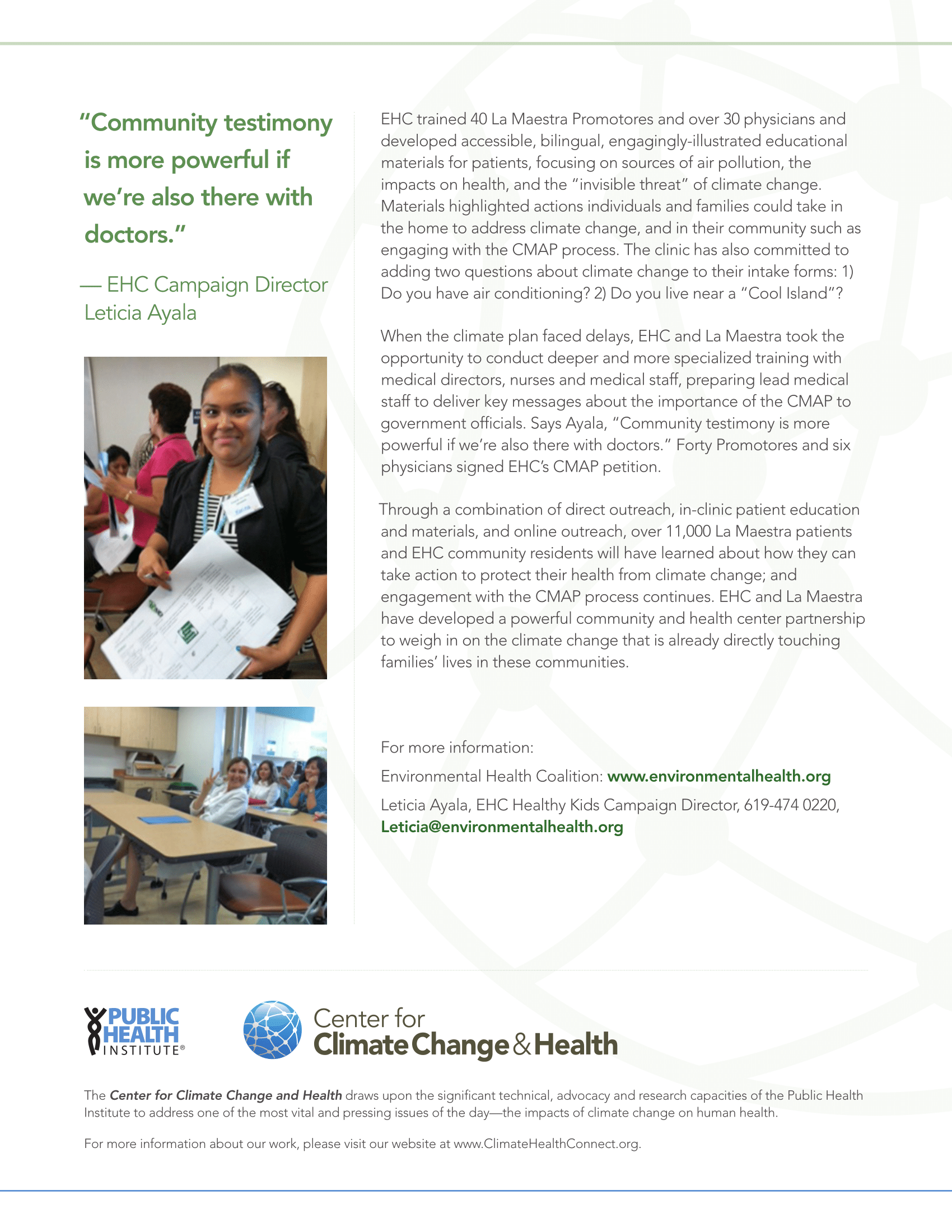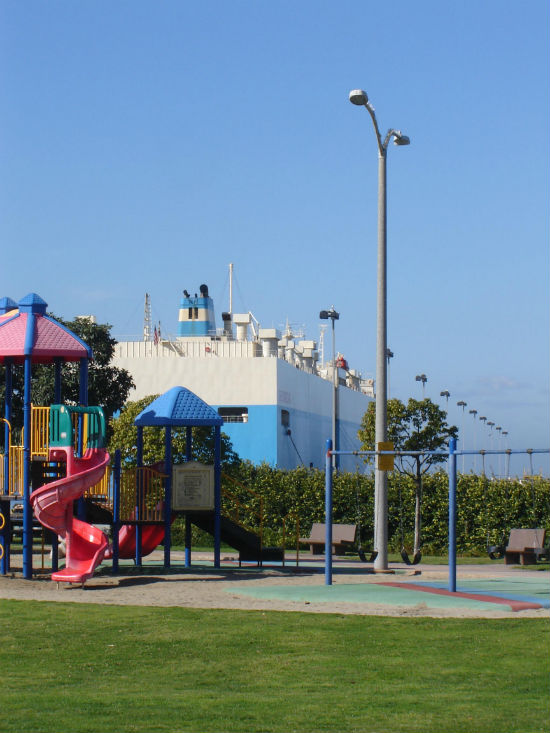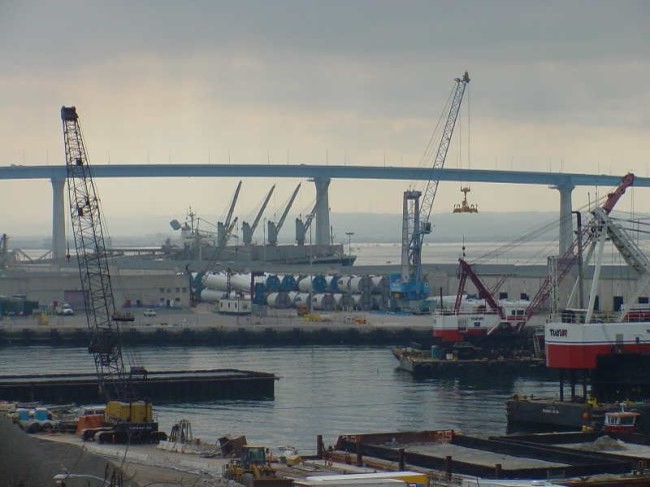
While Port District plans a massive expansion of its operations and diesel emissions from the Tenth Avenue Terminal, the neighboring community of Barrio Logan has been ranked even higher in the newest draft of California’s environmental justice screening model, CalEnviroScreen.
The new draft version three of CalEnviroScreen, released September 6, confirms the pollution hazards and social vulnerabilities in the Barrio Logan/Logan Heights area.
Barrio Logan was already at the very top of the state in version two of CalEnviroScreen – the highest five percent of all 8,000-plus census tracts in the state. The newly released draft version shows diesel hazards a full 15 percentile points higher than previously estimated for this area. Heart attack risk – a new indicator in version three – is also high, given the relatively young age profile of the community. Asthma continues to be a prominent indicator of disadvantage in the community – Barrio Logan and Logan Heights rank even higher on the asthma indicator this time around. This version of CalEnviroScreen also includes unemployment data for Barrio Logan – which the previous version lacked for this area. Unsurprisingly, it’s high.
Another new indicator measures cost of living based on the “rent-adjusted income” – or, the average income households have left after paying rent. Areas with high housing costs and low incomes rank high on this indicator. Barrio Logan is at the 97th percentile – an alarming result that will not surprise anyone struggling with rising rents in the area.
This small community, the historic heart of Chicano art and life in San Diego, is under siege from pollution, high health burdens, high rents and high unemployment. The community needs clean air, affordable housing and good jobs. Barrio Logan children need to be able to play outside. Instead, they may be subjected to a 500 percent increase in emissions and truck traffic from Port operations at the terminal.
Another draft document just out – the Environmental Impact Report (EIR) for the redevelopment of the Tenth Avenue Marine Terminal – indicates the community will not be getting a break anytime soon.
The draft EIR evaluates the impacts of a 500 percent increase in cargo volume coming through the terminal. All this cargo would mean more ships coming, more cranes and forklifts moving cargo, more trucks, more night-time light, more noise, as many as 800 more truck trips a day and a cancer risk estimate of 197 per million – about 20 times more than the level normally considered “significant.” All the extra diesel fuel burning would also generate a huge increase in planet-harming greenhouse gas emissions – a 540 percent increase – not even counting all the emissions generated from ships crossing the ocean to get here.
EHC will be working with community residents and the Port of San Diego to get a better outcome for Barrio Logan. We believe that, at a minimum, the Port must ensure that no net increase in pollution will occur from the redevelopment. Jobs generated from the project must be high quality, and every effort must be made to hire workers from the community. And greenhouse gas emissions must be offset by corresponding decreases on Port property or in the community. Stay tuned for action alerts as the issue moves forward.
Join us on December 13 at 1 p.m. at 3165 Pacific Hwy. to demand the Port be a good neighbor to our communities.
Click here to sign our petition to tell the Port of San Diego to take its plan back to the drawing board.

Joy Williams
Research Director
Environmental Health Coalition
